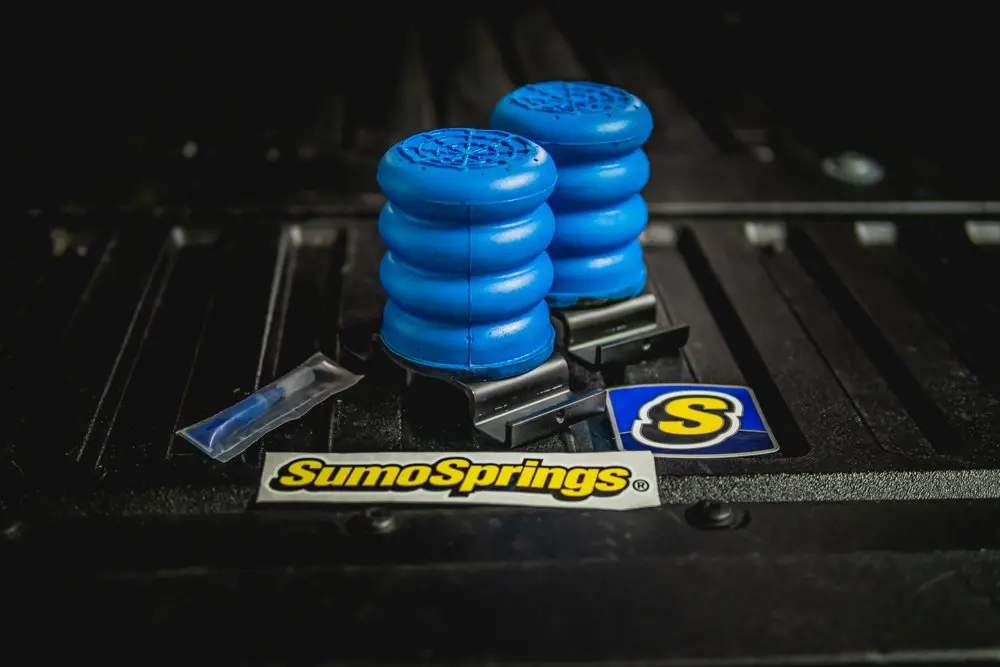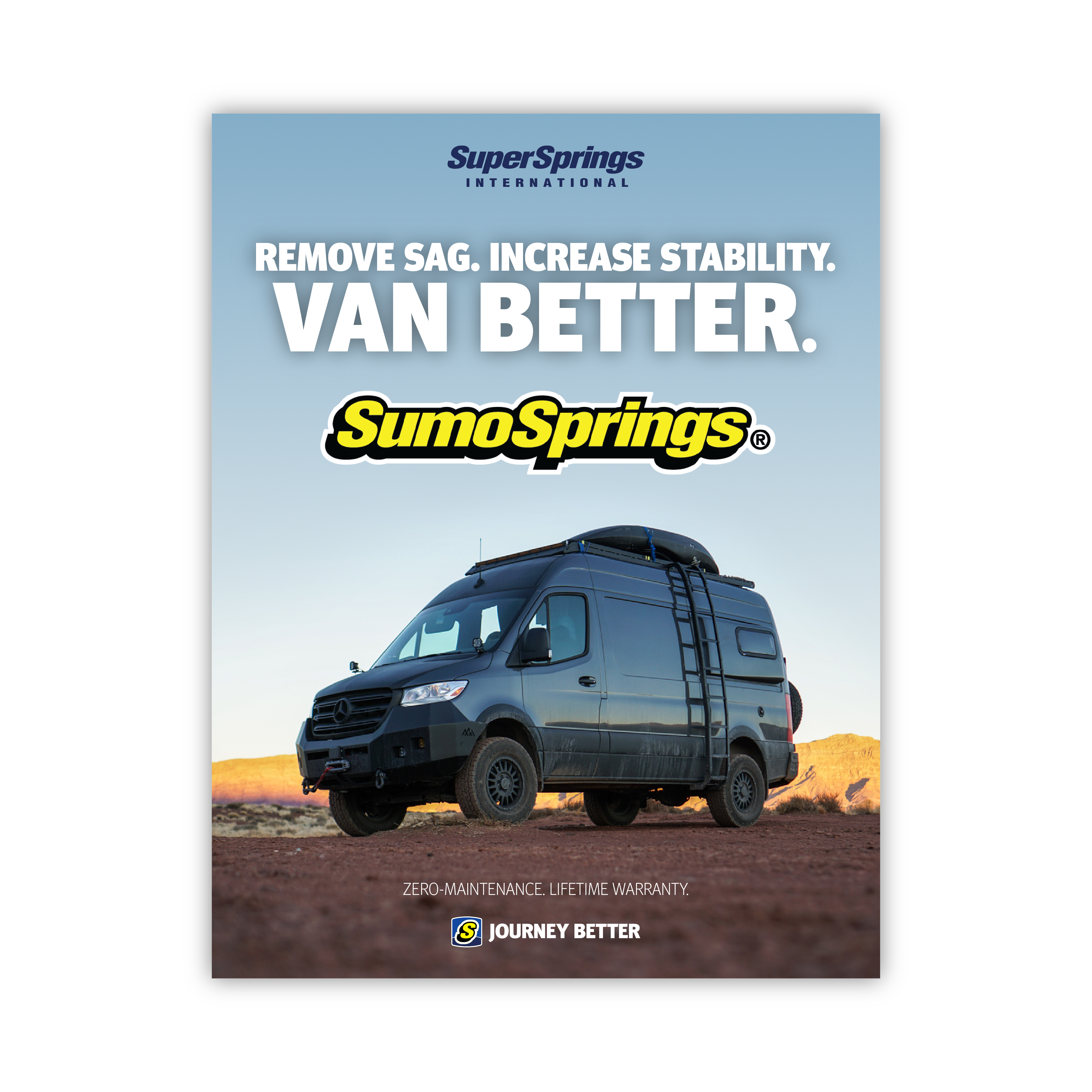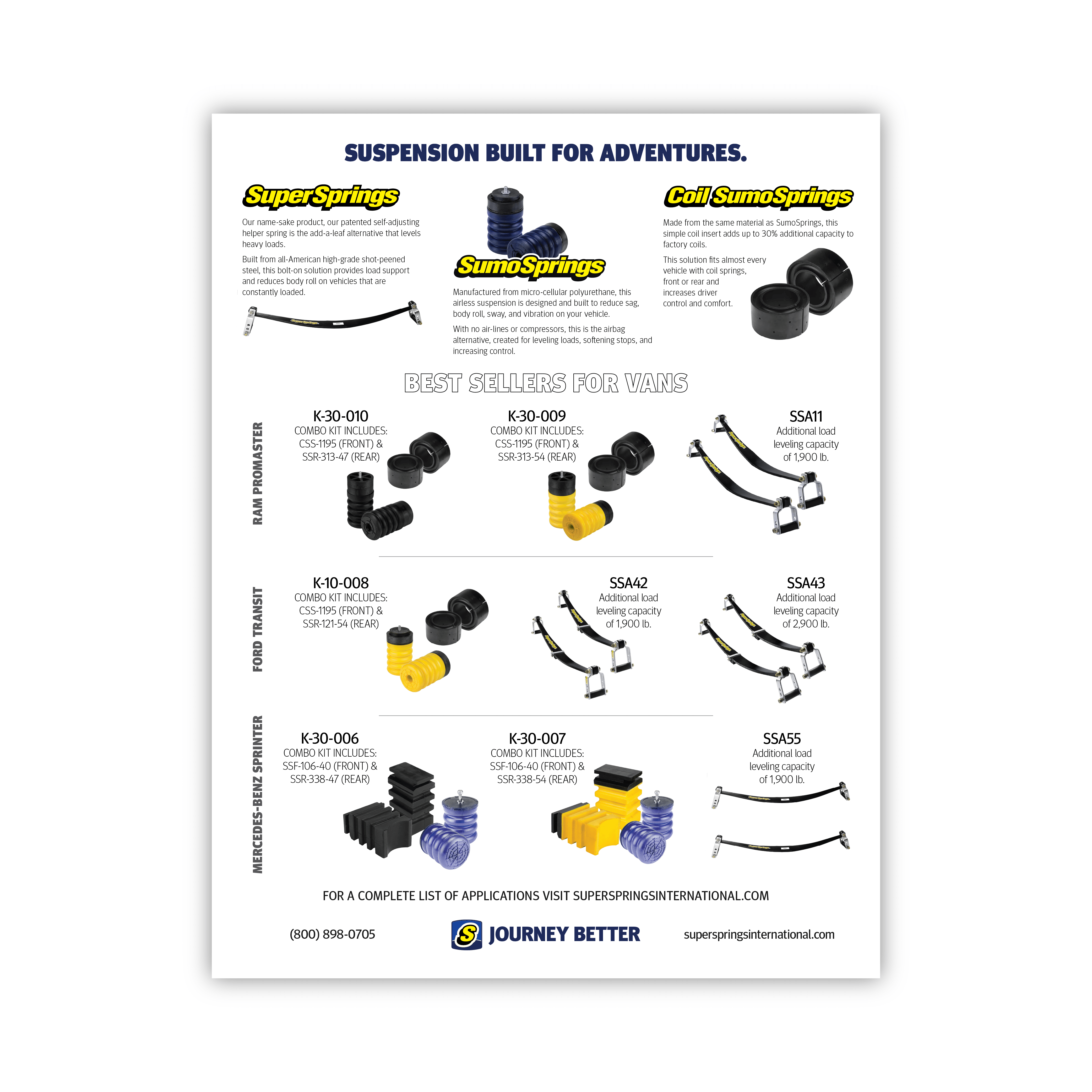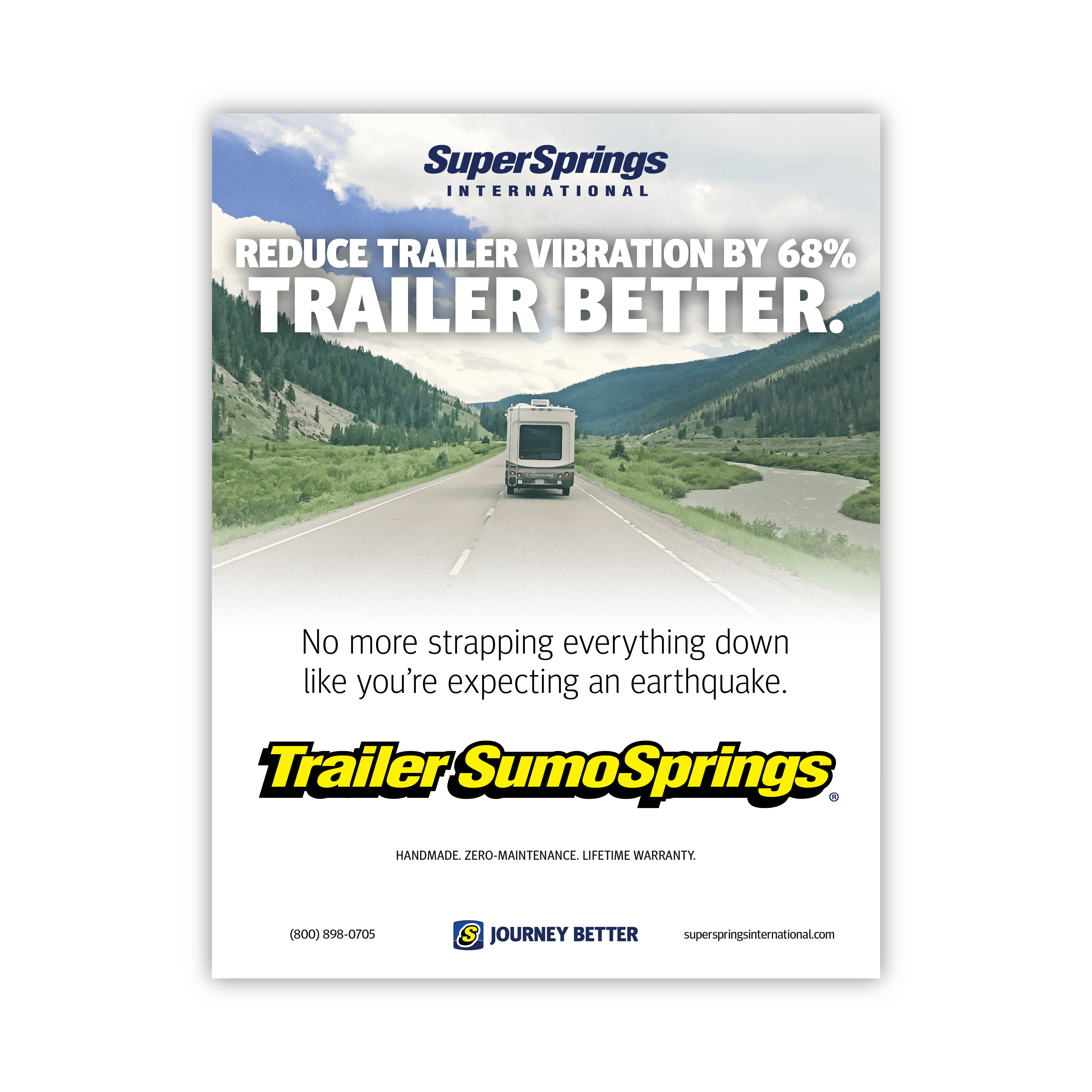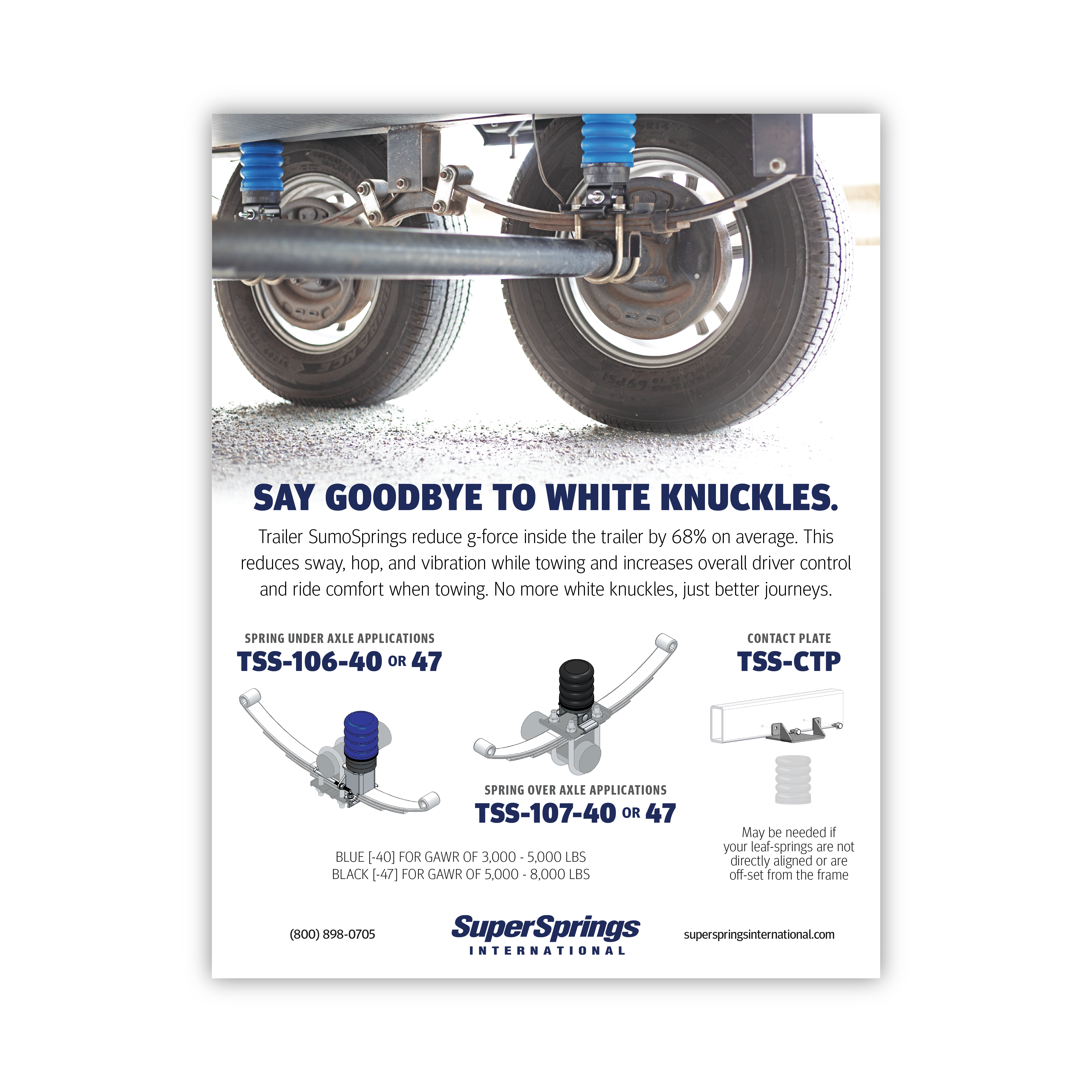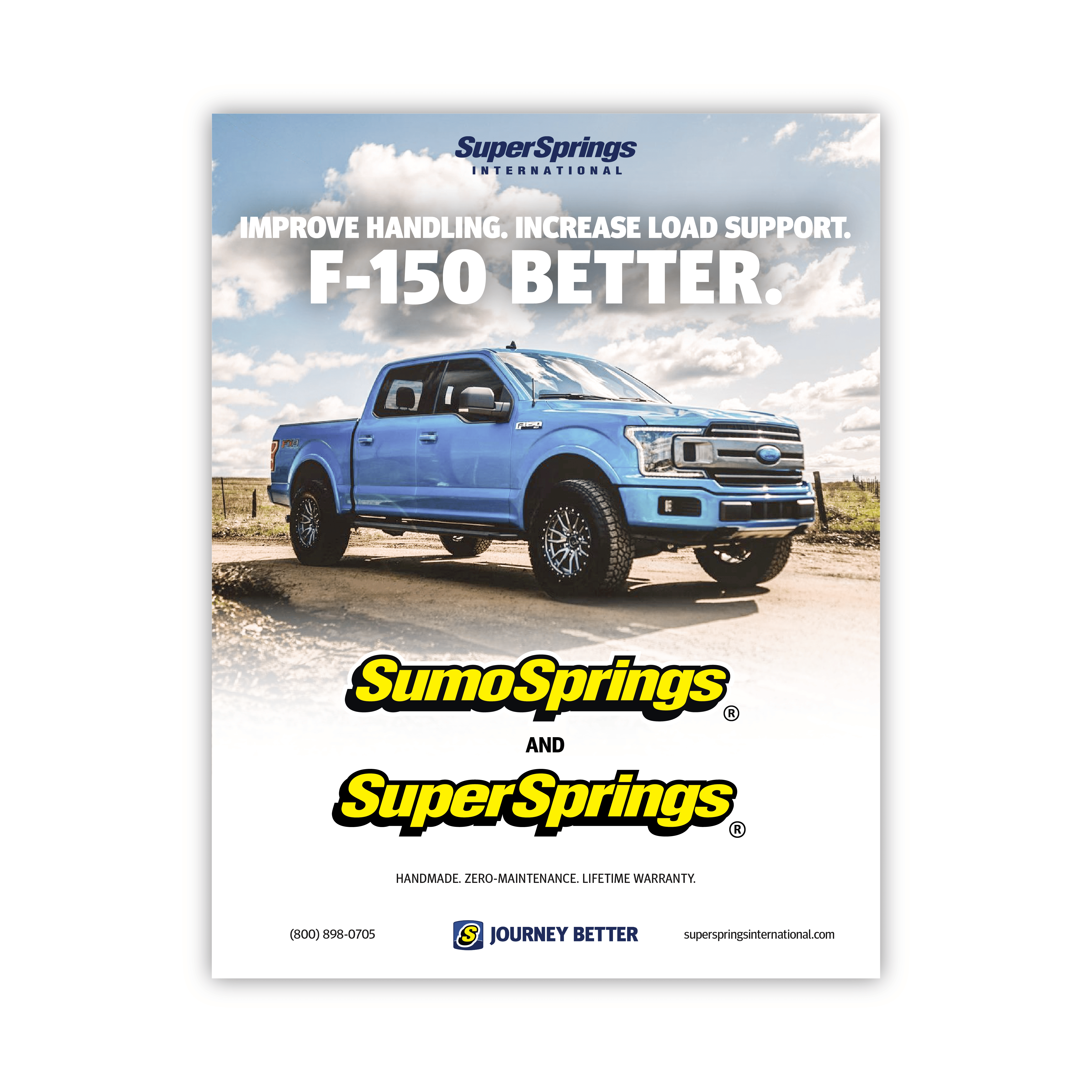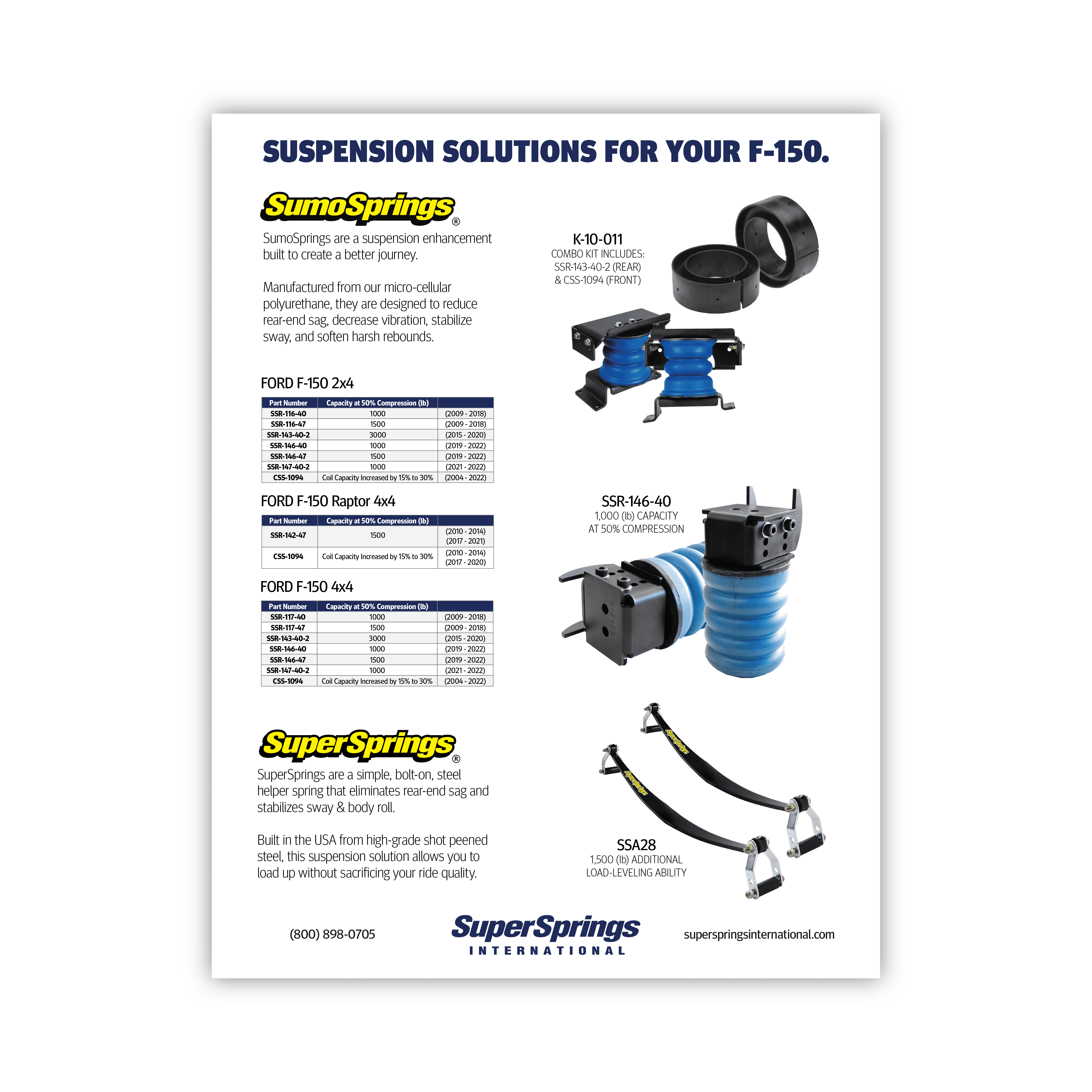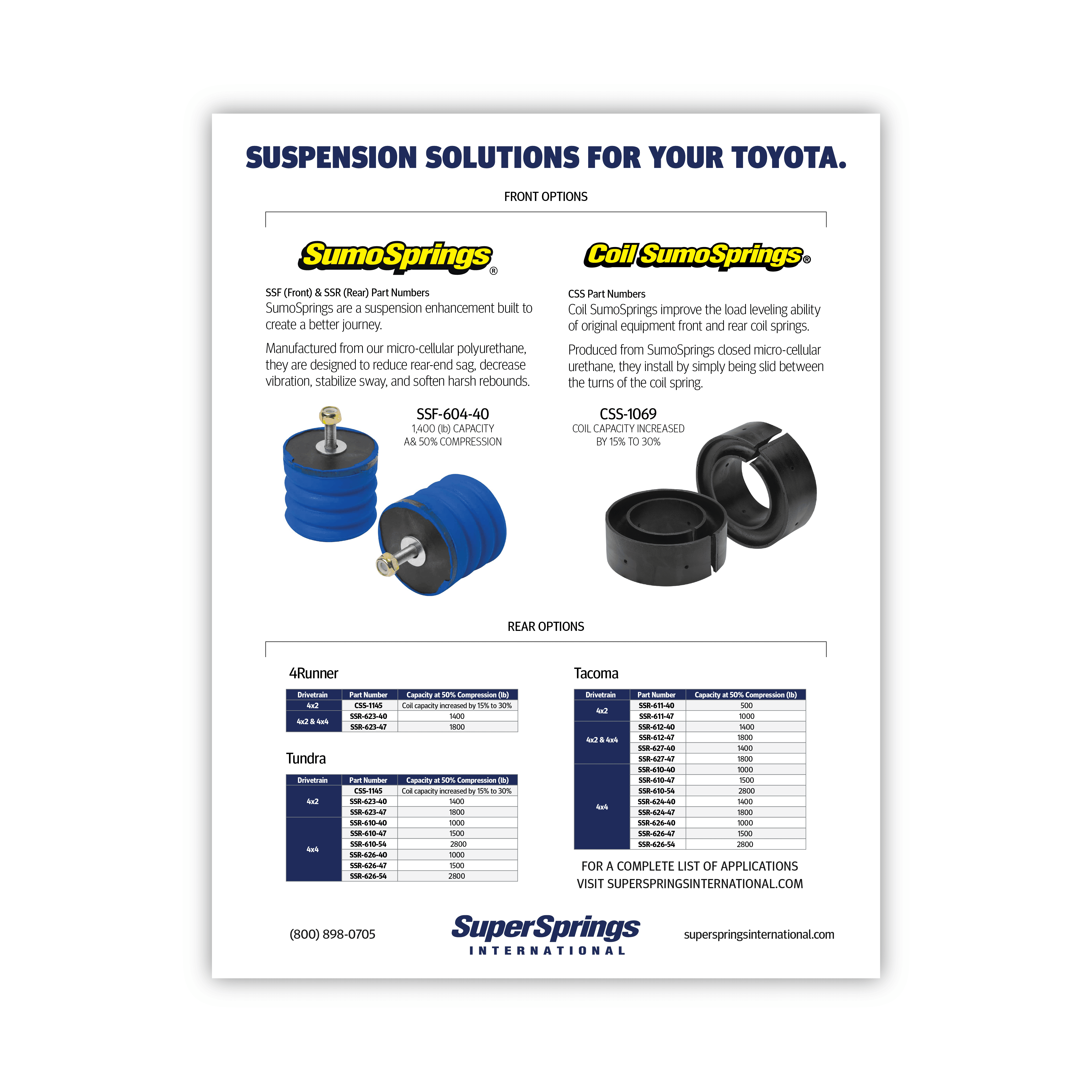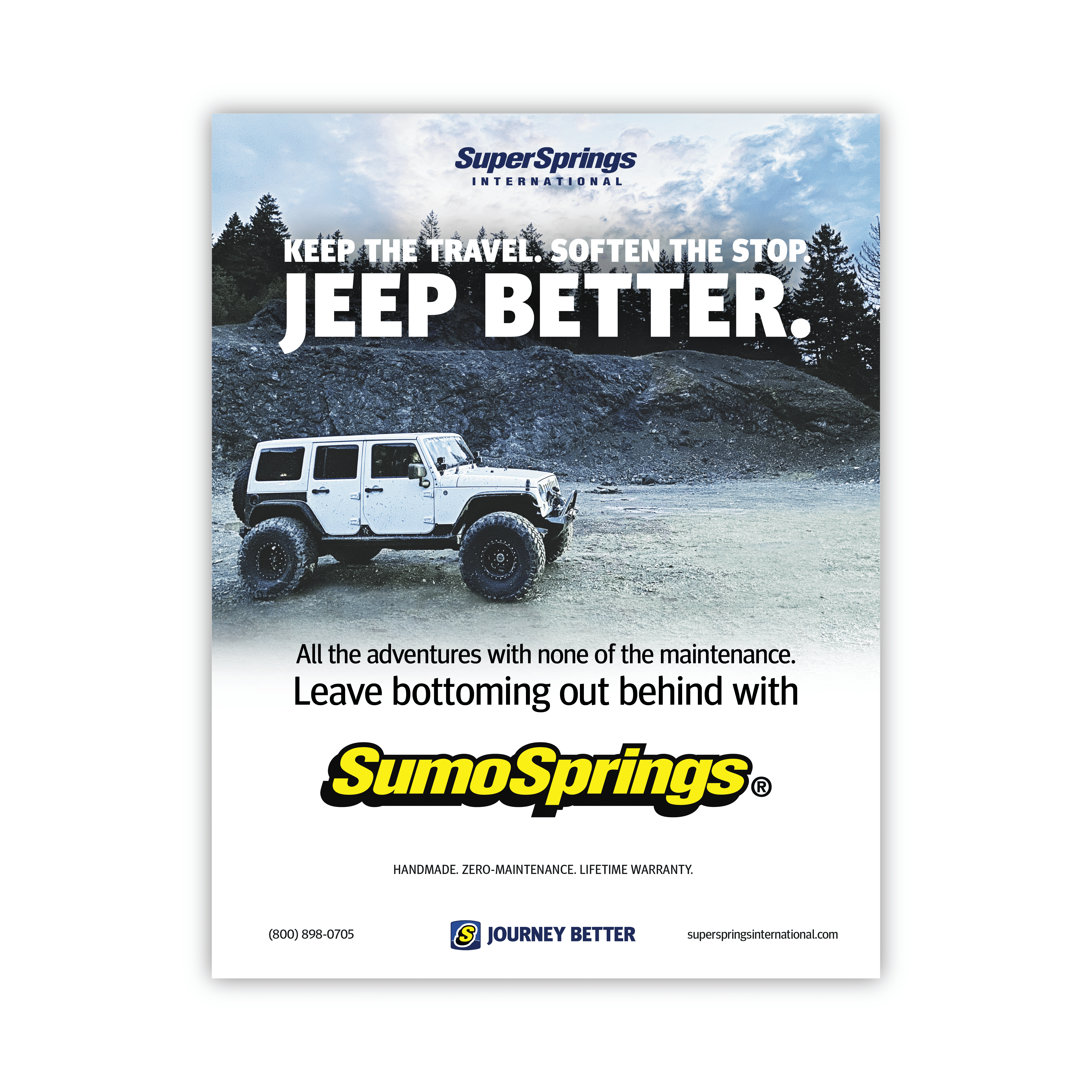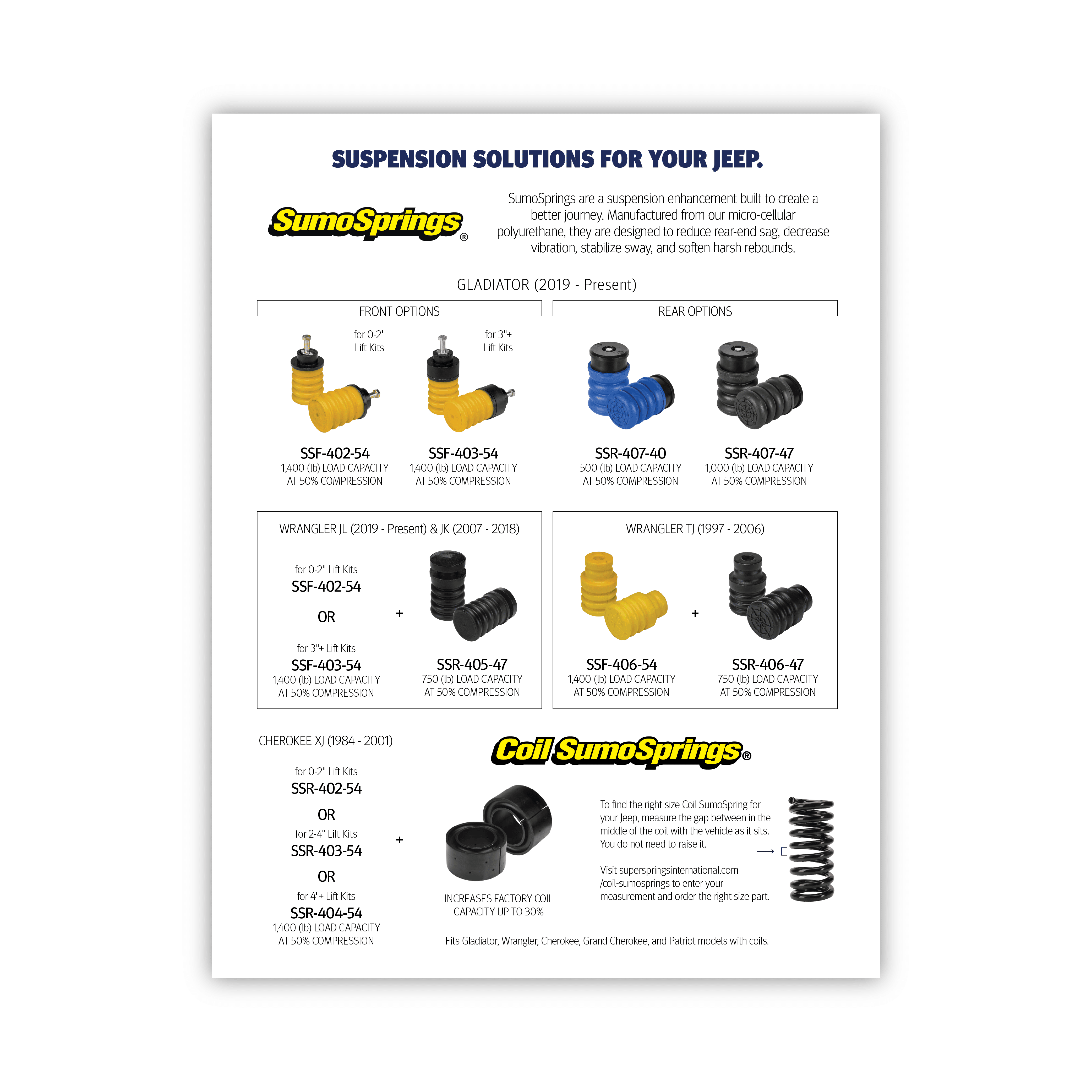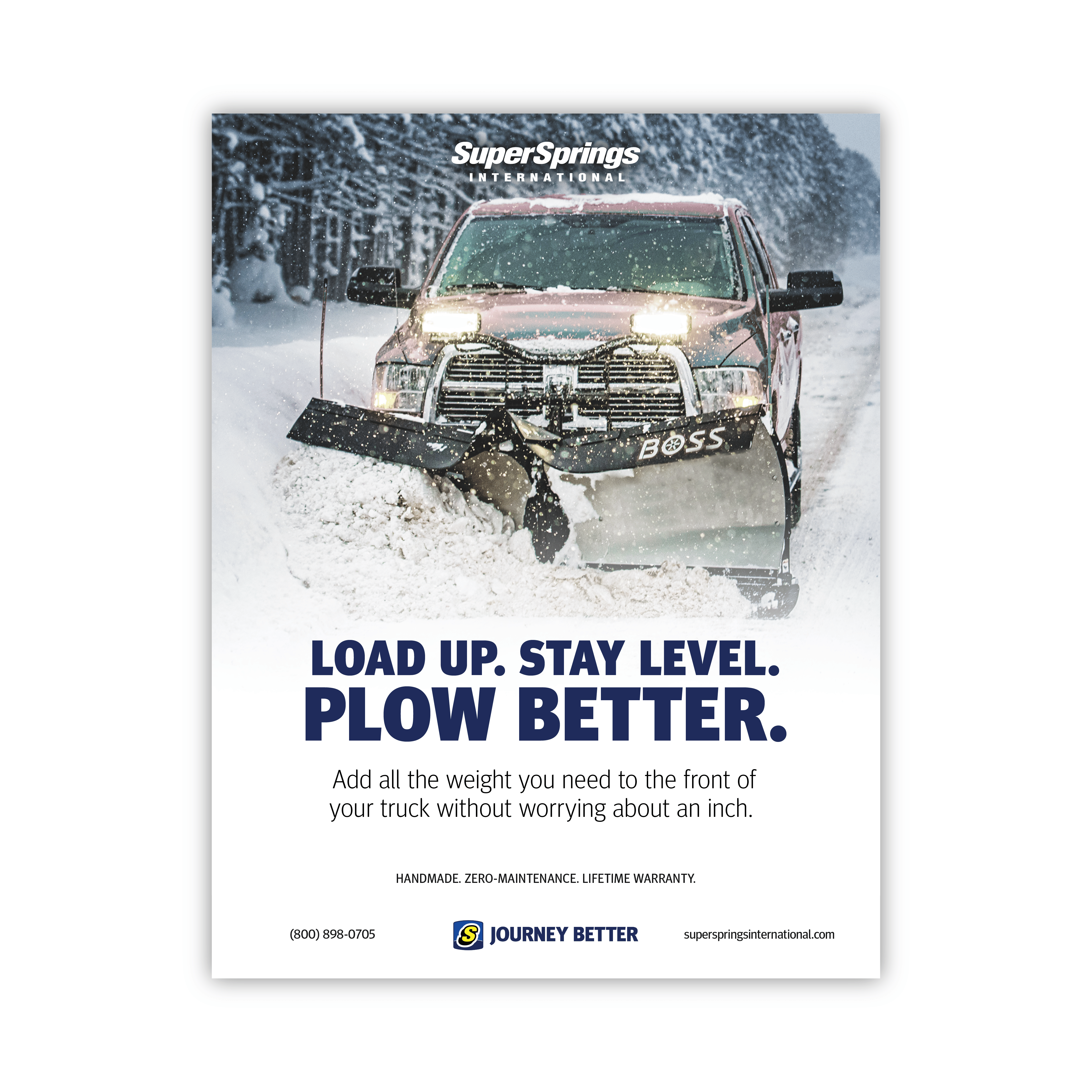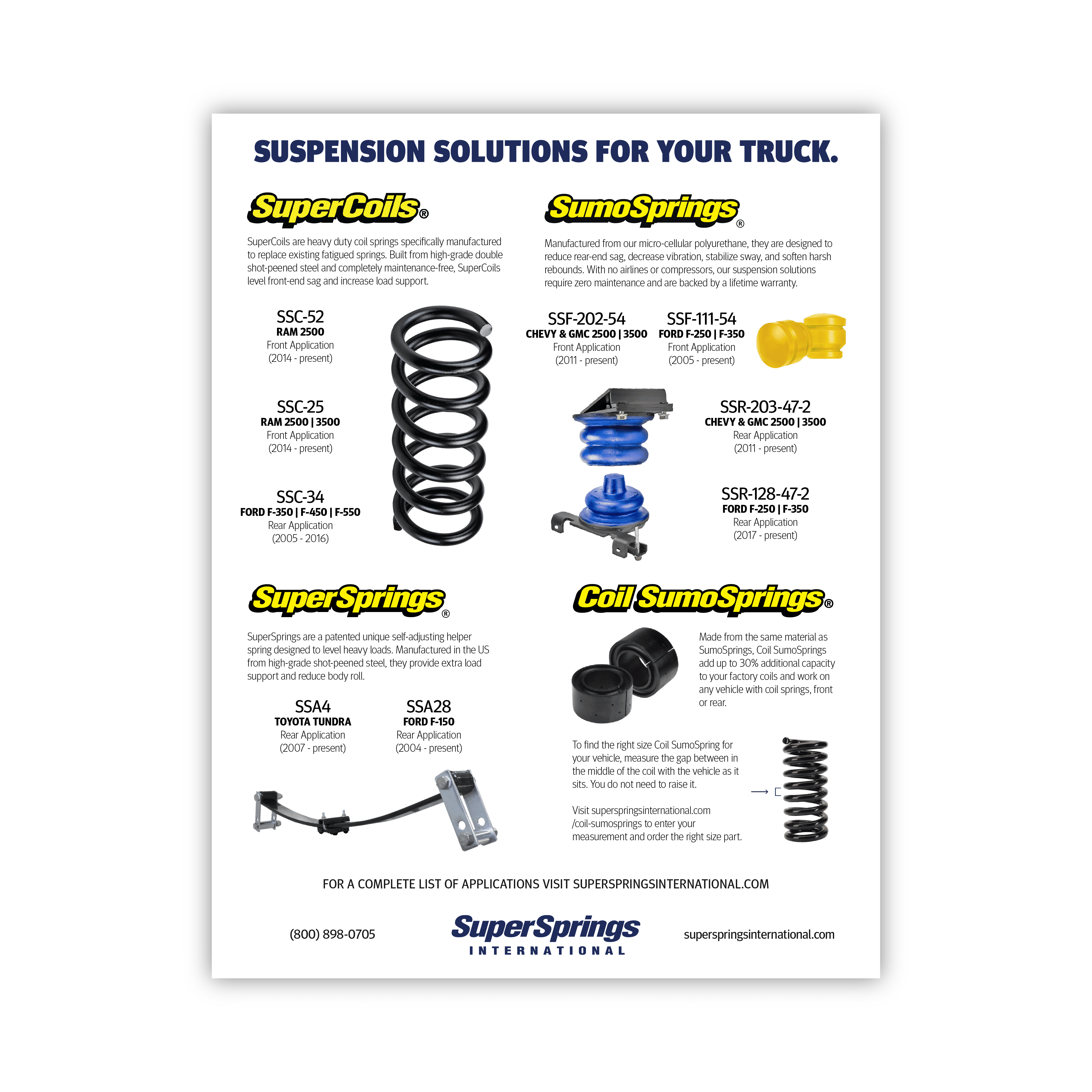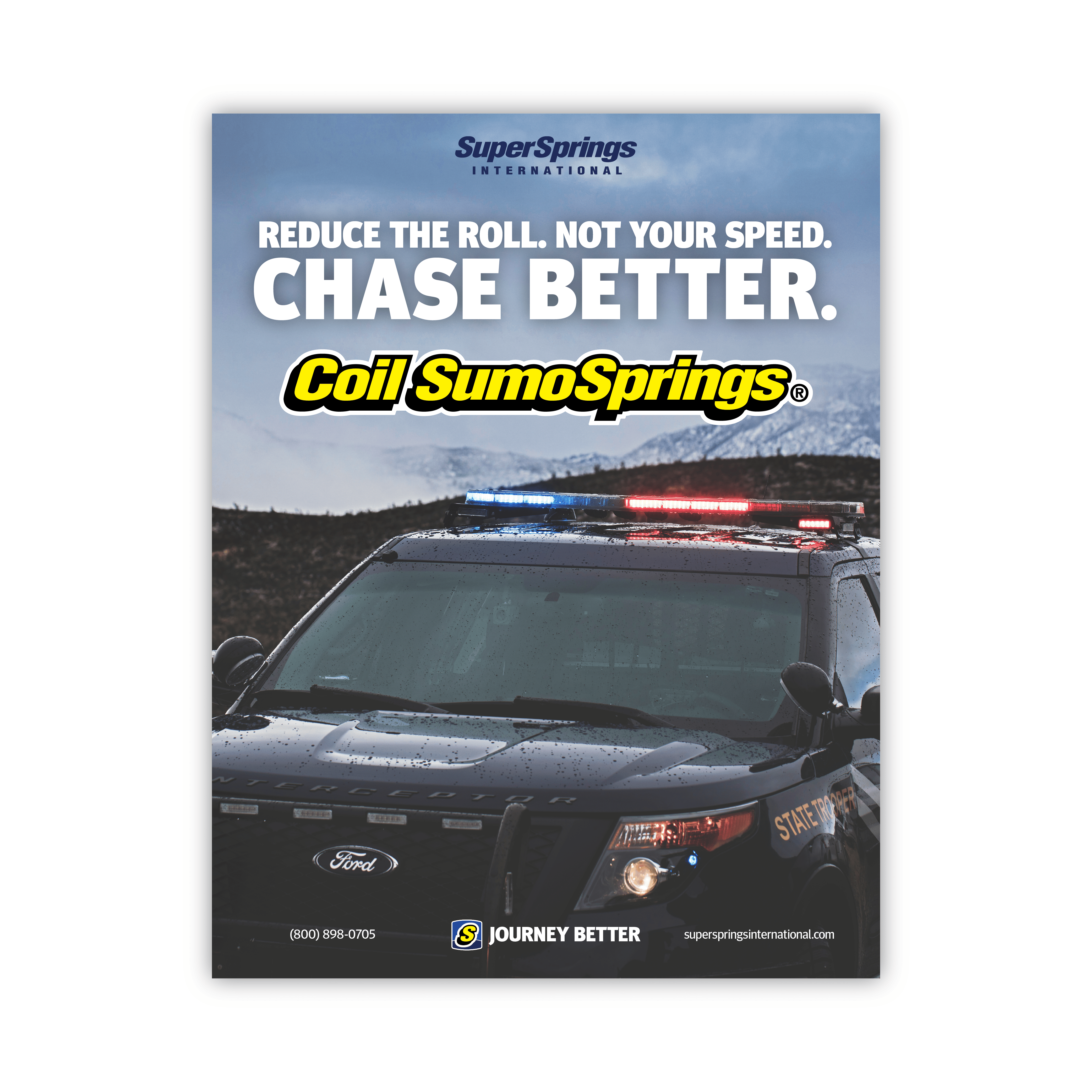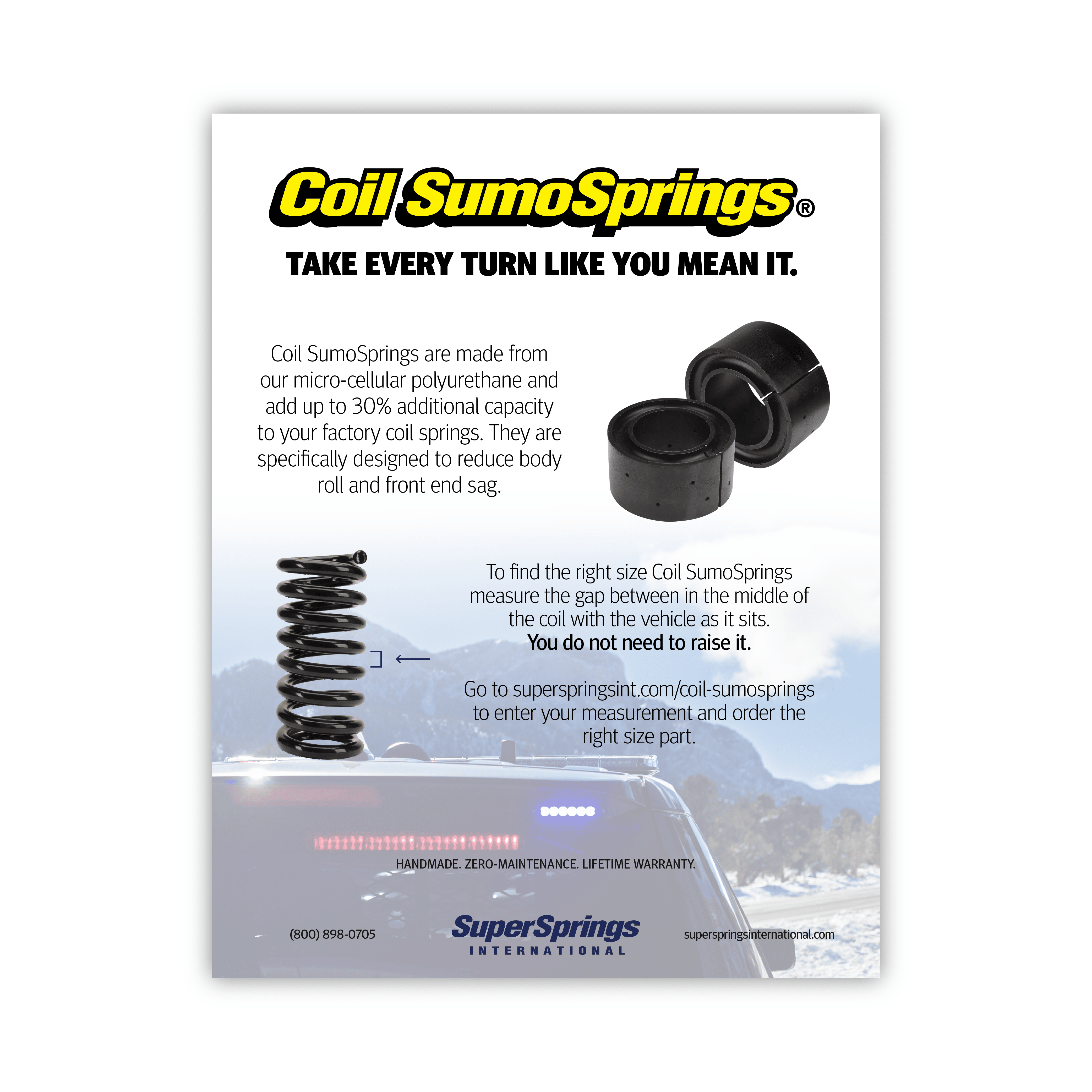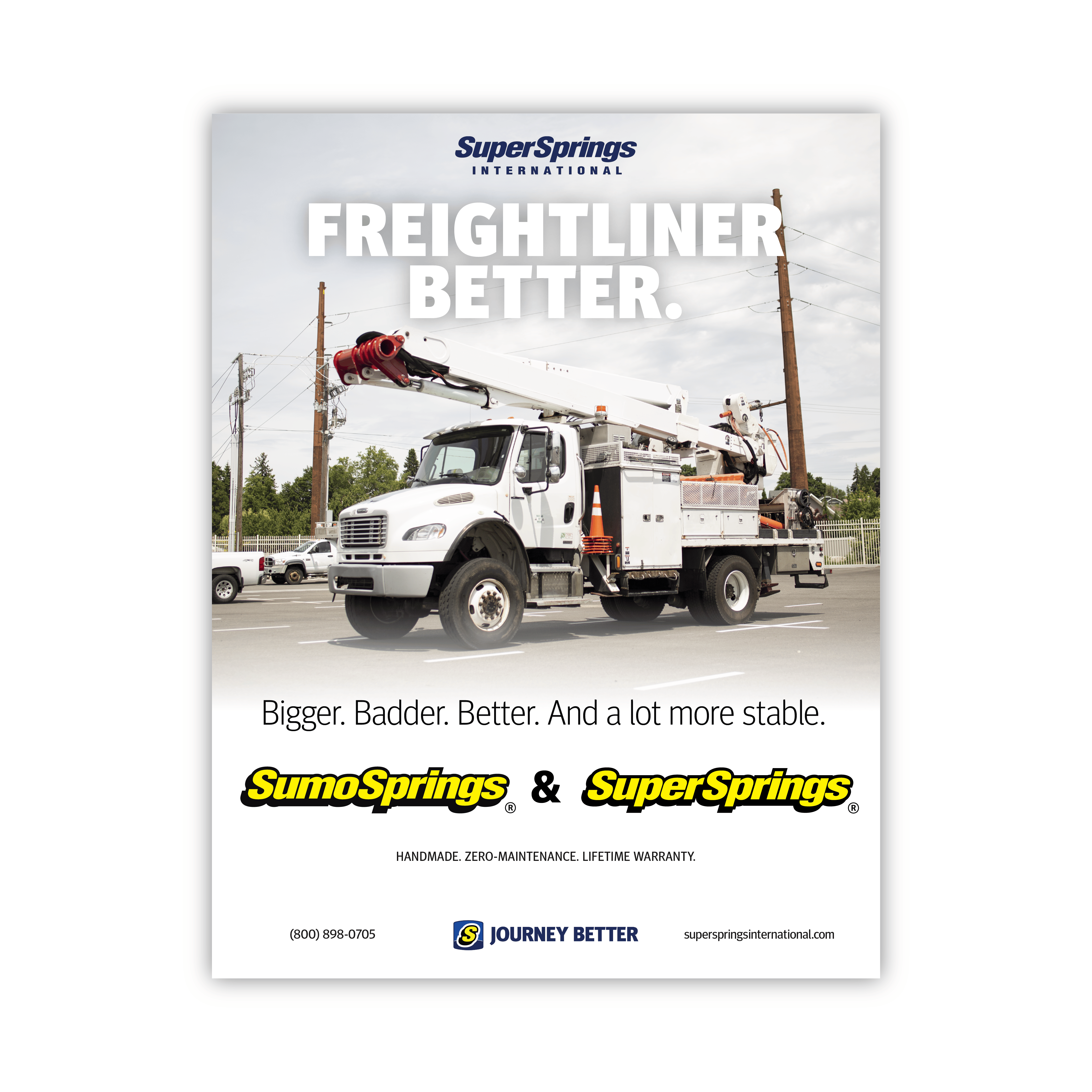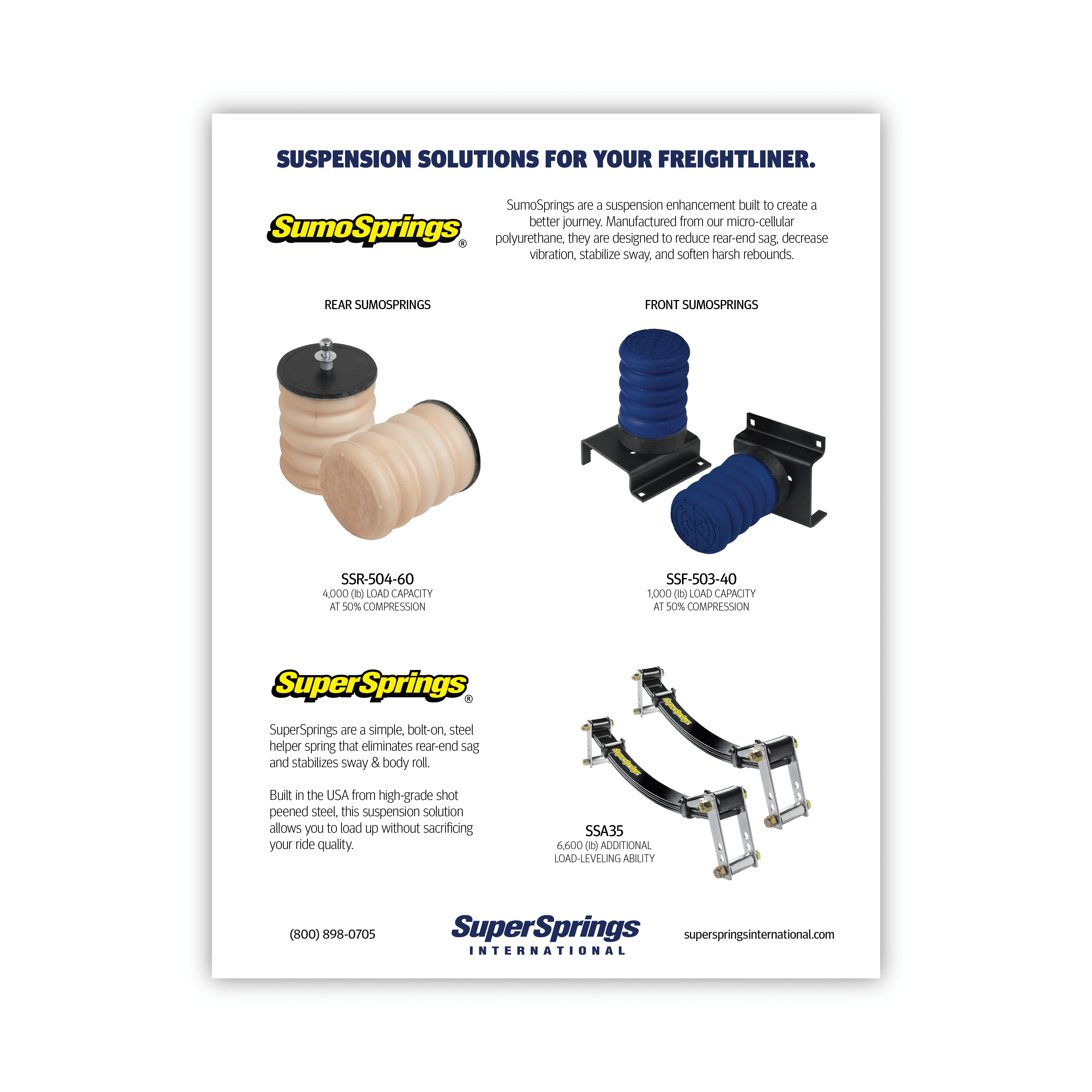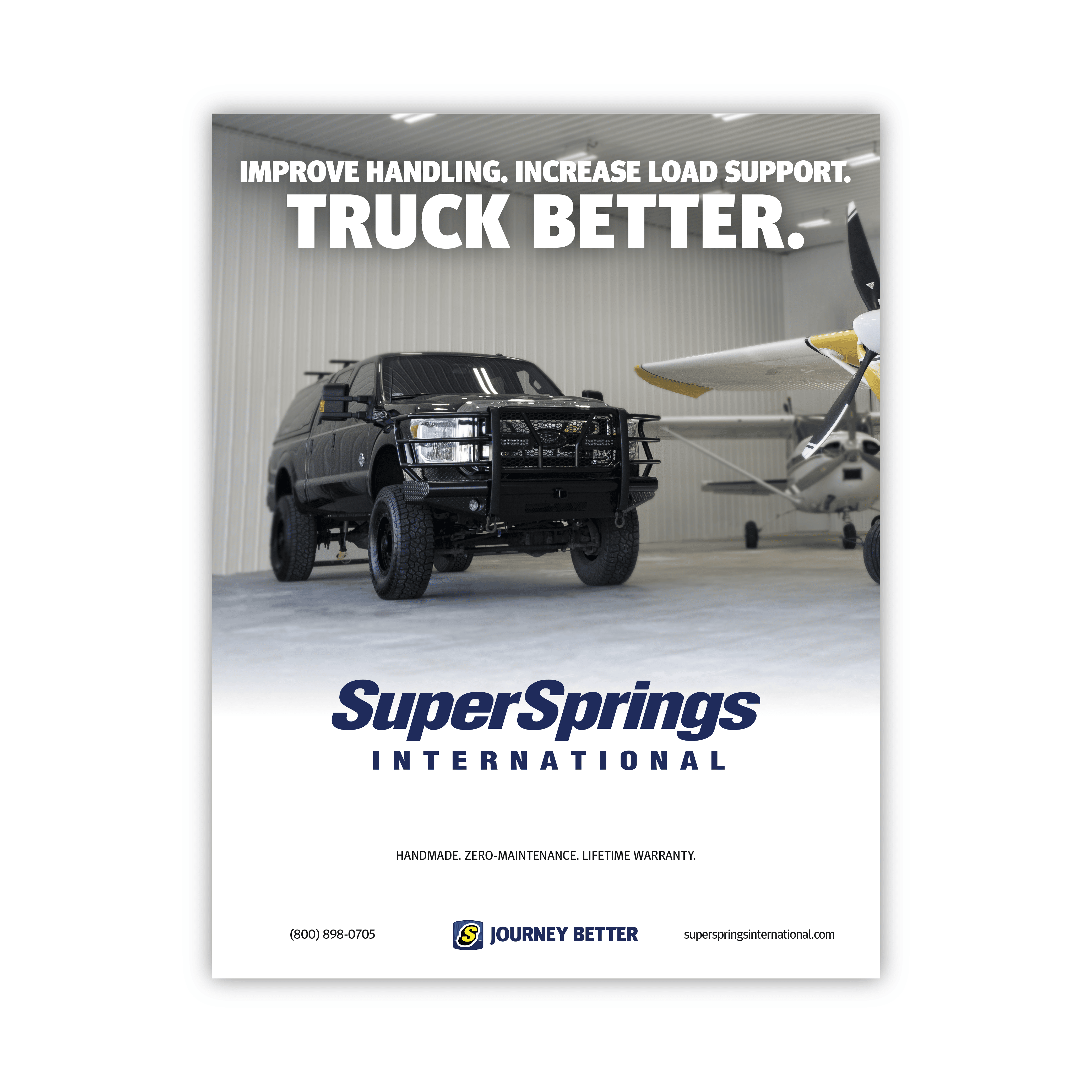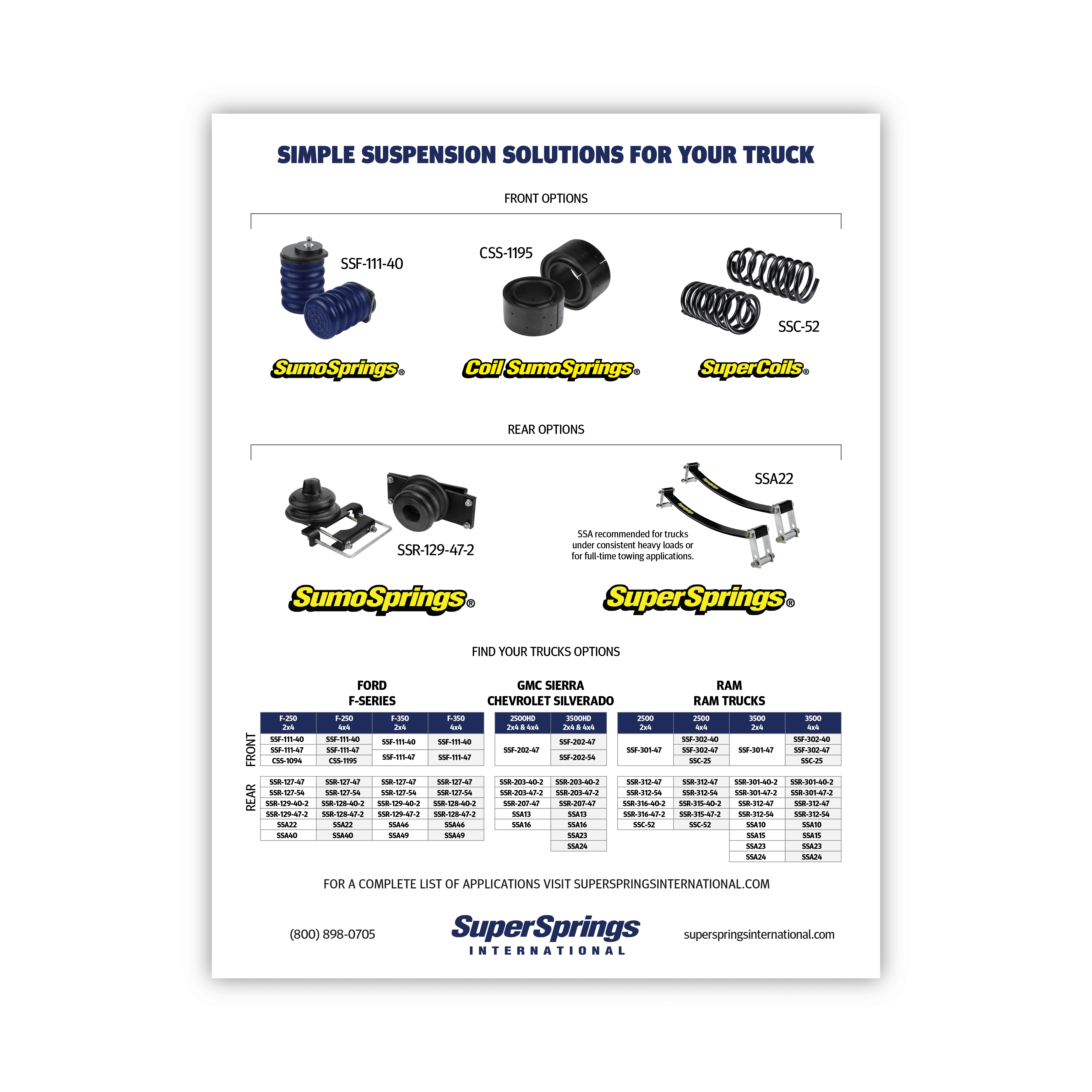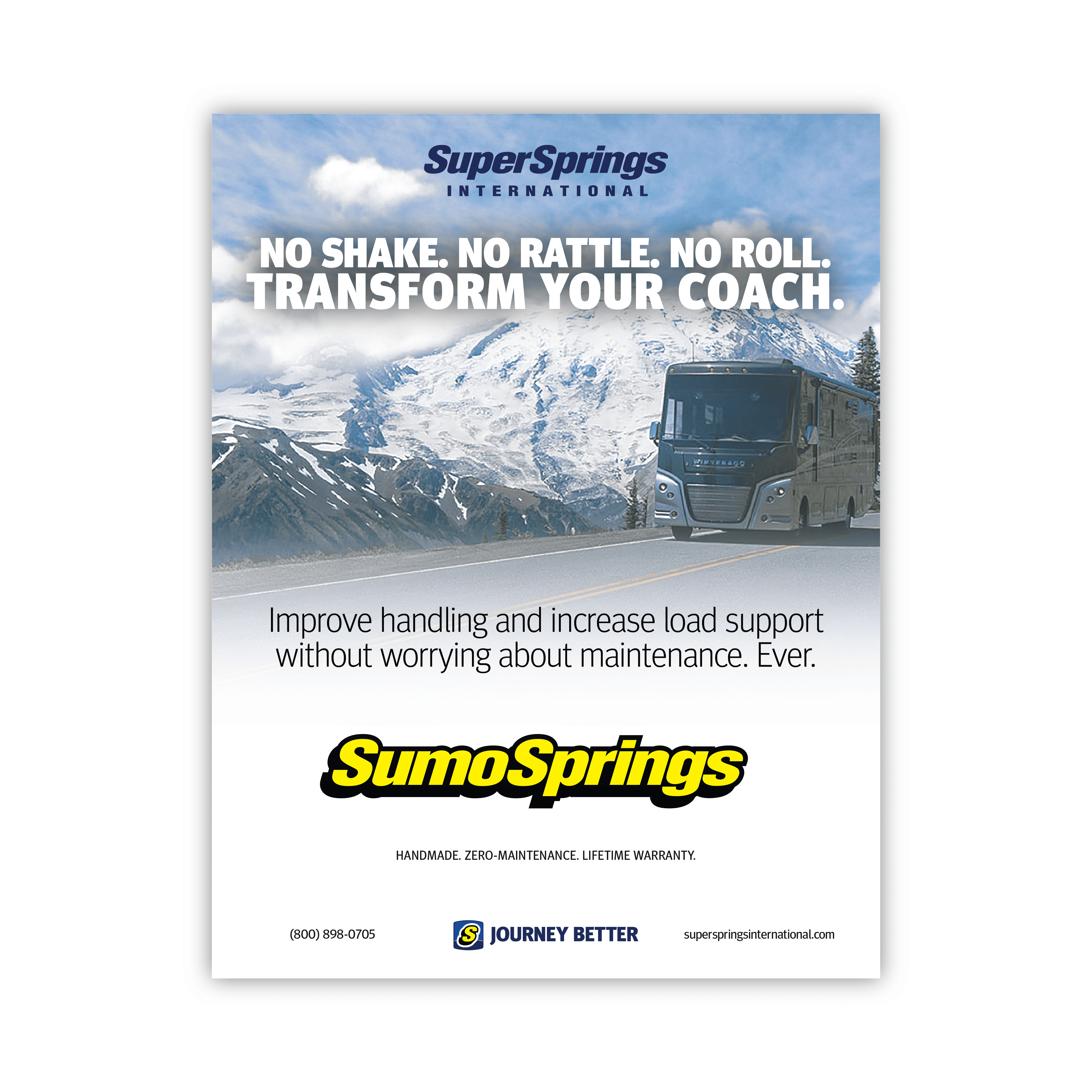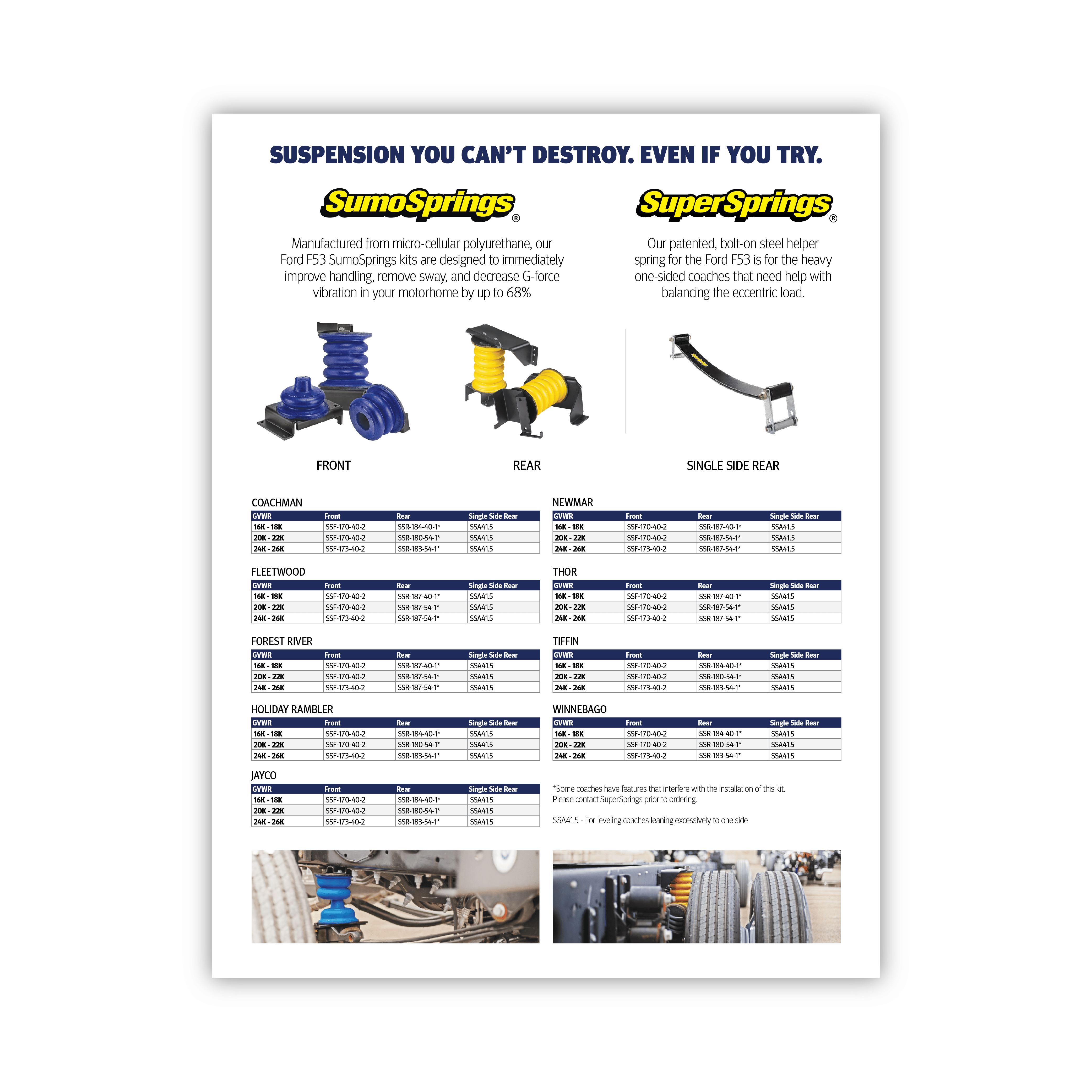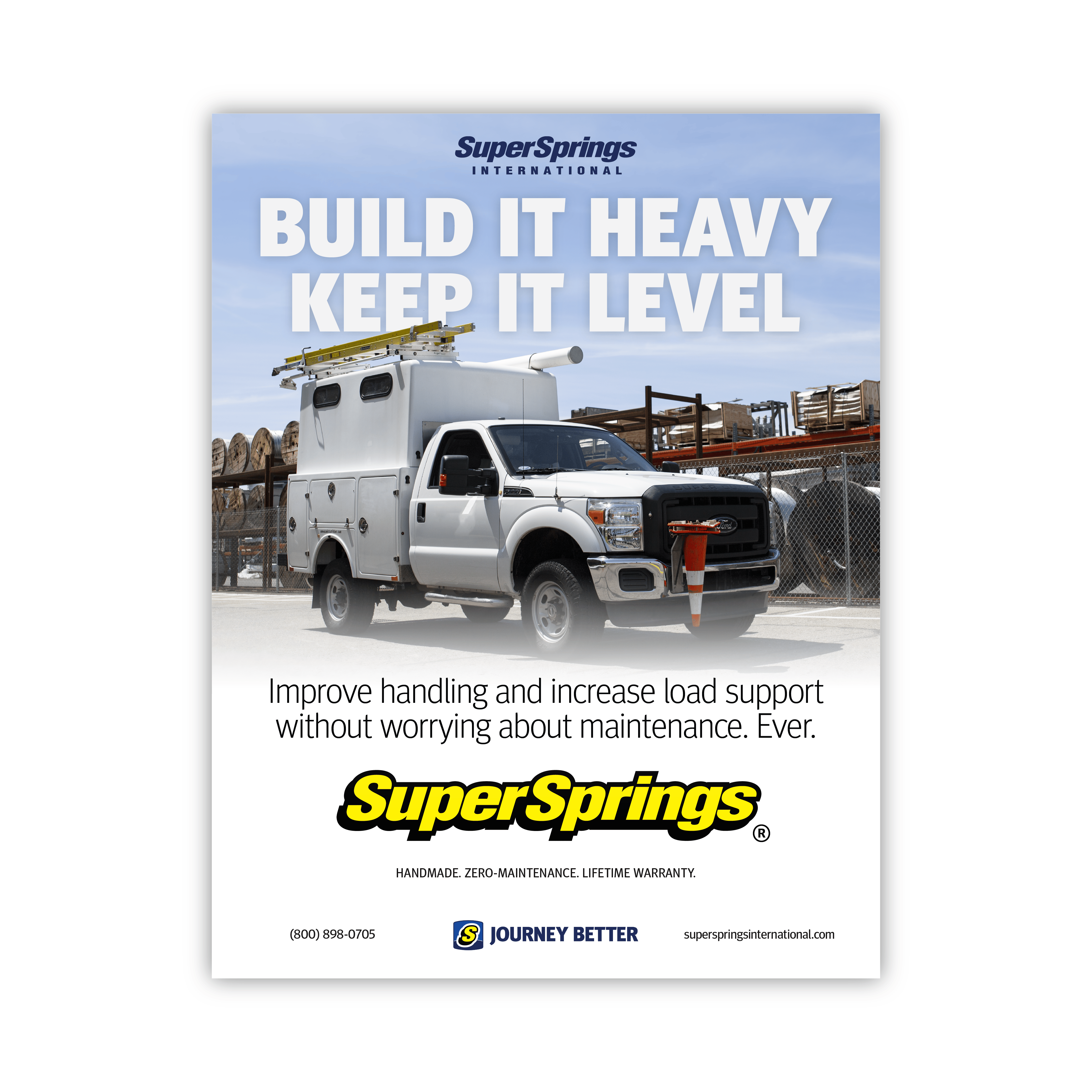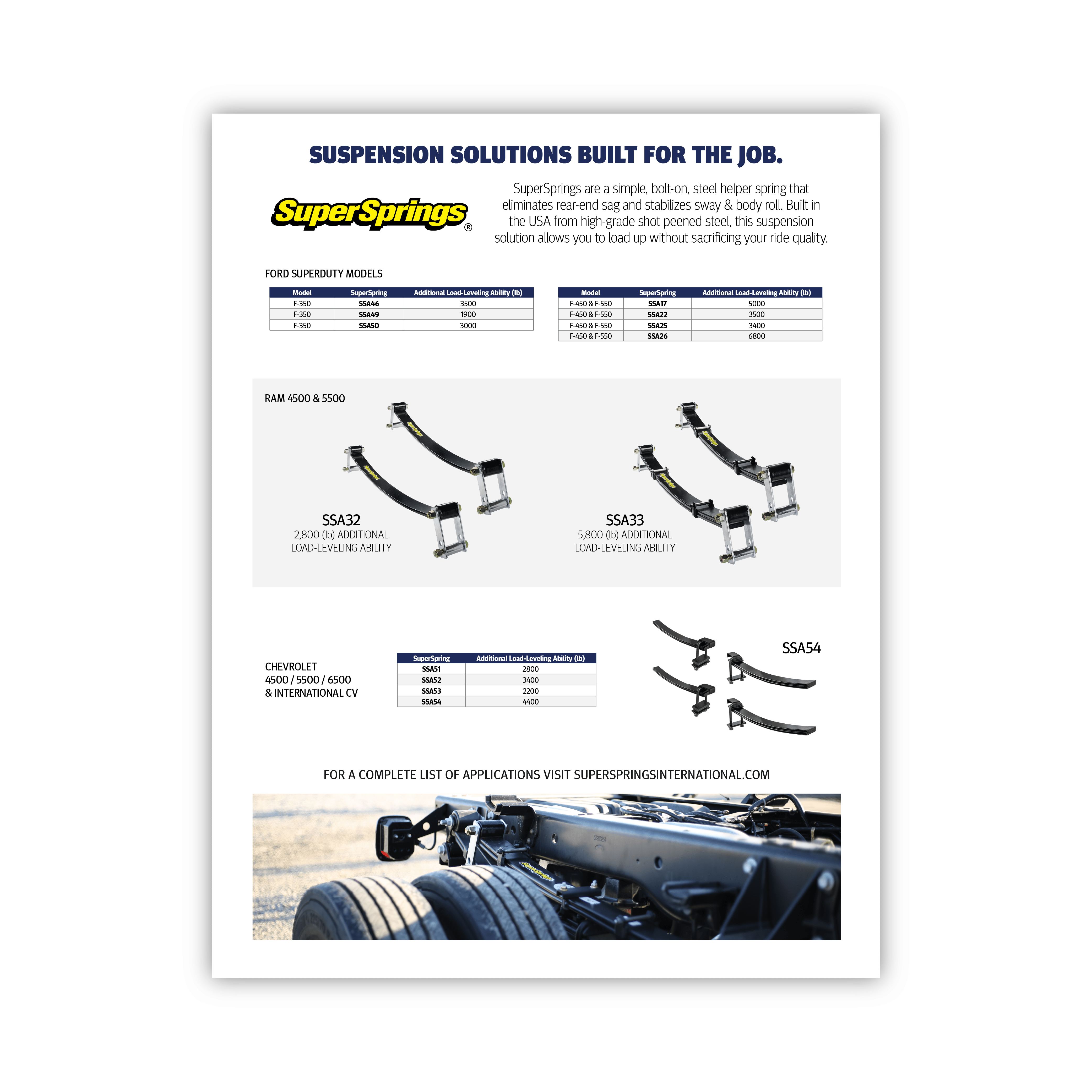Original post by Chase O’Loughlin of TrailTacoma
SUMOSPRINGS BUMP STOP: A GREAT AFTERMARKET BUMP STOP UPGRADE THAT HELPS TO REDUCE SAG AND SMOOTH OUT THE RIDE FOR YOUR 3RD GEN TACOMA
It is no secret that the stock Tacoma leaf pack is pretty weak. Adding just a hundred pounds or so will cause the rear end to noticeably sag and reduce your Tacoma’s ride quality. If you’ve hit the stock Tacoma bump stops, you know how jarring and uncomfortable the ride can be.
Sure, you can install airbags on your truck, but they are quite a hassle to air up and down every time you load up the bed. Airbags also aren’t a good option for people who go off-road in their Tacoma because they are prone to punctures.
The easiest and most maintenance-free way to support your truck’s rear suspension is to install some upgraded bump stops. SumoSprings are just that; a drop-in replacement for your Tacoma’s terrible stock bump stops.
SO WHAT EXACTLY ARE SUMOSPRINGS?
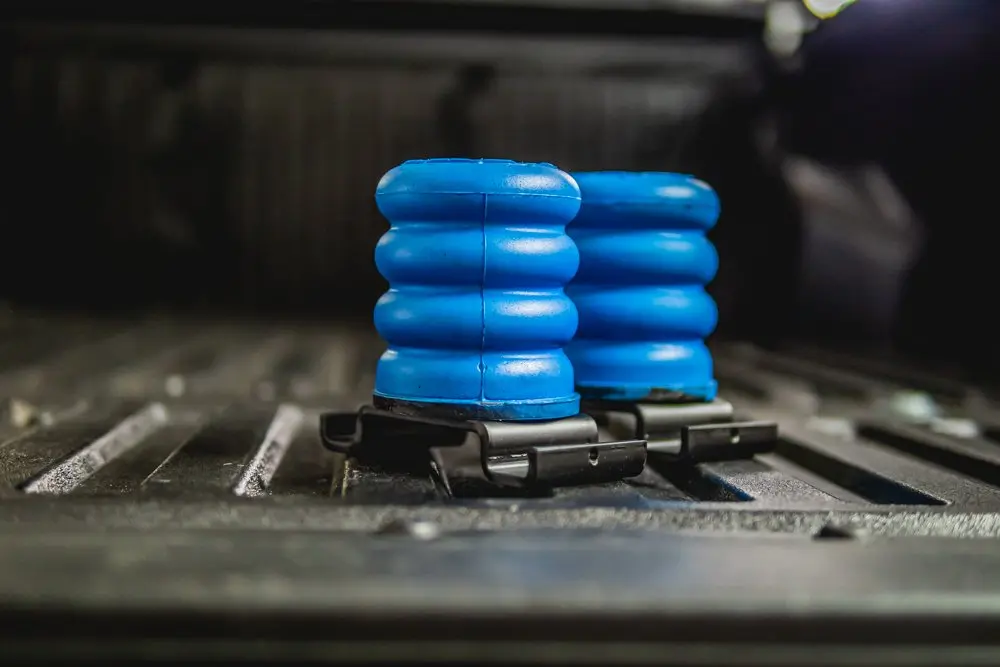
SuperSprings describes them as “a patented suspension product designed to enhance load carrying ability, stabilize sway, and improve overall driver control and ride comfort.” They have a progressive spring rate, meaning they become stiffer the more the further they are compressed.
SumoSprings are an alternative to airbags. They are made out of durable closed micro-cellular urethane, which is puncture-proof and does not require adding or removing air. Though SumoSprings do not require you to fill them up with air, they still contain air. The air is trapped in millions of tiny air pockets in the micro-cellular urethane material.
SumoSprings come in a few different configurations with different heights, diameters, and densities to support varying amounts of load. They are rated by how many pounds of pressure it takes in order to compress the spring to 50% of its height.
They come in blue, black, and yellow colors. This denotes which density they are, with blue being the least dense and yellow being the most. For the Tacoma, SuperSprings offers the blue (500lb capacity at 50% compression) and black (1000lb capacity at 50% compression.
In this install and review, I am using their lightest (blue) configuration, which is rated for 500 lbs. Since I have an empty bed with my current setup and mainly wanted them as an upgraded bump stop rather than a load-bearing product.
Sign Up and #JourneyBetter
Embark on a better journey with SuperSprings International. Sign up for our newsletter to receive professional tips, product updates, and exclusive offers.
WHAT YOU’LL NEED
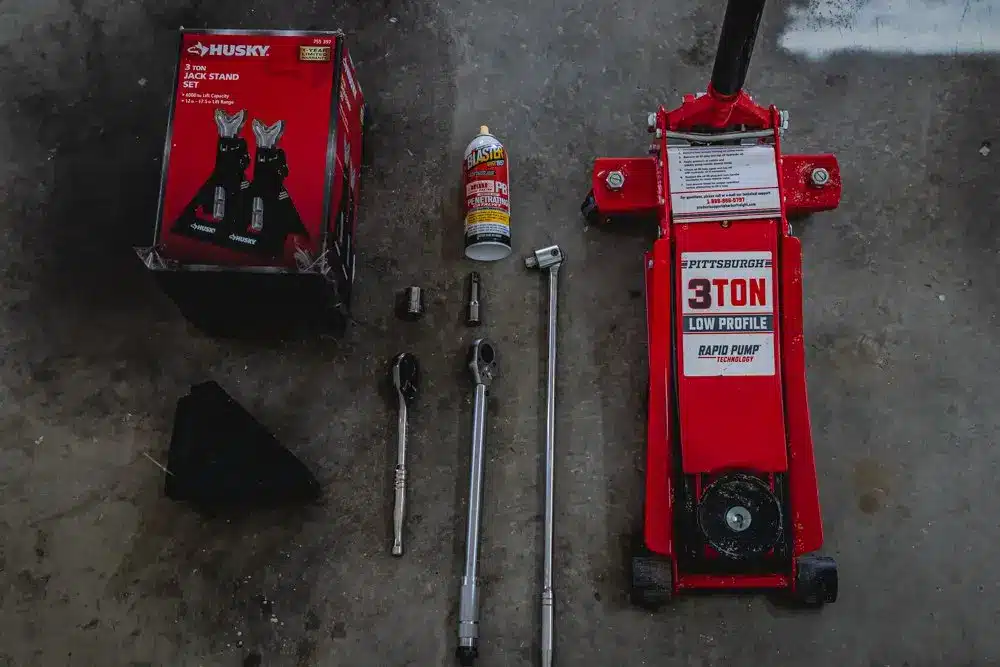
This installation is pretty straightforward, but your installation may be slightly more involved depending on the setup of your truck.
If you have a completely stock truck with no lift in the rear, then you will likely need to jack up the rear end of the truck in order to lower the rear axle to fit the bump stop in. If your truck is lifted, you will likely be able to do this installation without jacking up your truck.
Tools & Materials
- 19mm deep socket
- Wrench or impact
- Torque wrench
- Breaker bar
- PB Blaster or WD-40
- Tire chock
- Floor jack
- Jack stands
TO JACK OR NOT TO JACK
In my case, I have a 2” lift on my truck. I was able to fit the SumoSprings in without jacking up my truck. It’s worth noting that if your truck is lifted, the SumoSprings will not be touching the frame of your truck unless you order the extended version.
I was okay with this because I wanted to retain as much articulation as possible. I do not tow or haul often, so I’m not really using the SumoSprings as an airbag to reduce sag. If your truck is lifted and your goal is to reduce sag, get the SumoSprings with the spacer so that it is touching your frame and engages faster in the articulation of your rear suspension.
As I stated earlier, you will need to jack up the truck if your suspension is stock.
Although I didn’t jack up my truck, I ended up using the jack under the frame as a safety precaution in case the truck was to move for some reason.
PART 1. REMOVE THE STOCK BUMP STOPS
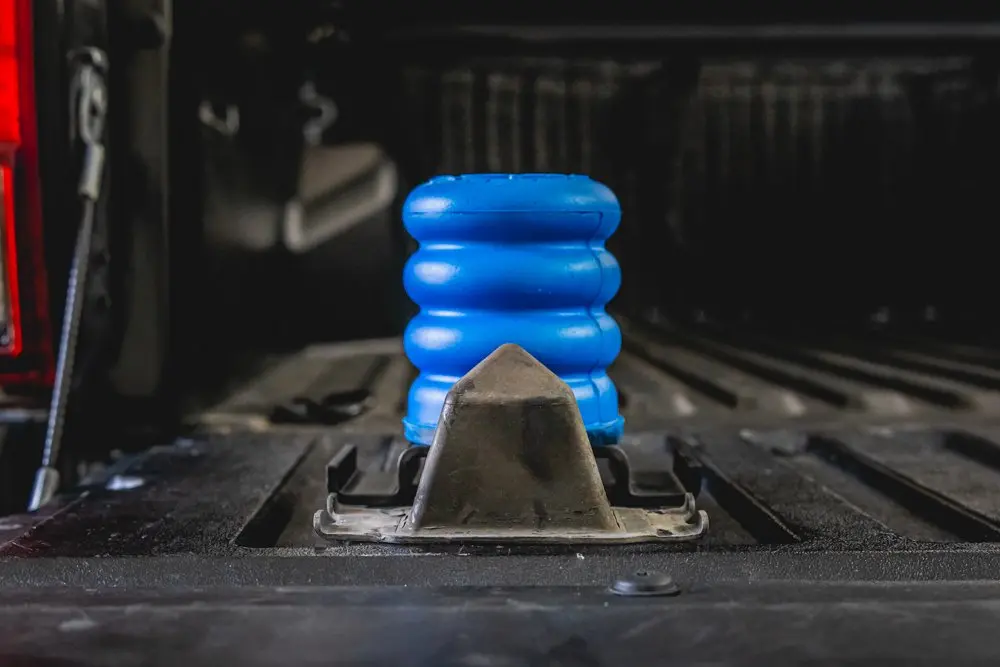
Before attempting to remove the stock bump stops, you will need to put tire chocks in front of your tires and pull the emergency brake so your truck doesn’t move while you are working on it.
To remove the stock bump stops, you will need to loosen the U-bolts on the rear axle. I recommend doing the full install on one side at a time. This means removing the stock bump and replacing it with the SumoSpring on one side, then doing the same on the other.
It is a good idea to hit the nuts on the U-bolts with some PB Blaster to help make it easier to loosen them. After giving the PB Blaster a couple of minutes to penetrate, you can use the breaker bar with the 19mm deep socket to loosen the nuts.
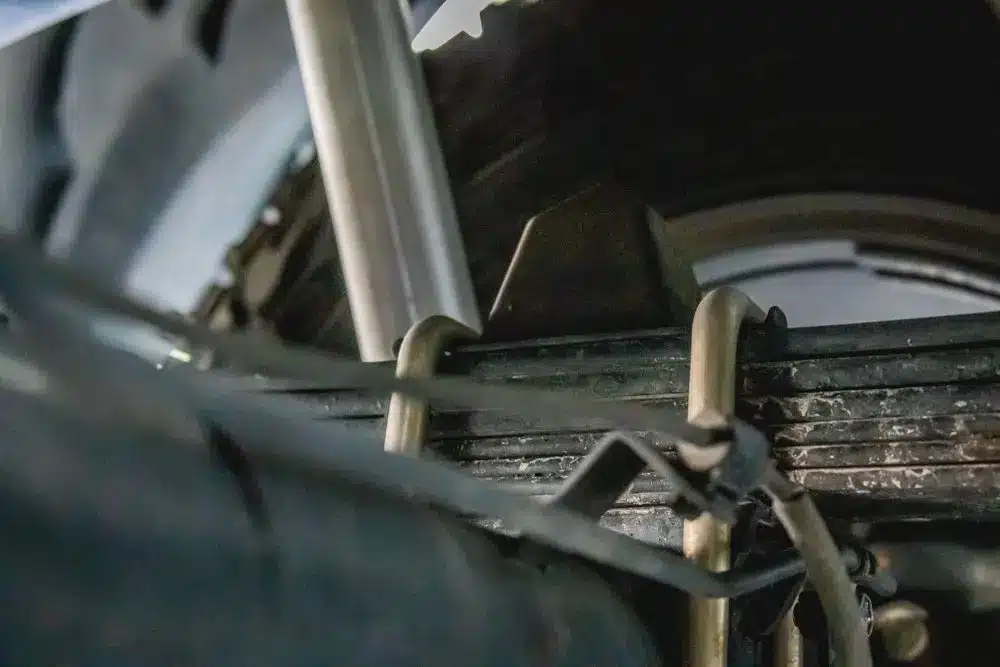
Once they’re loosened and moving easily, you can finish loosening them with your wrench or impact. You probably won’t need to completely remove the bolts to remove the stock bump stops.
When the U-bolts are loosened sufficiently, you should be able to push one of the U-bolts over the lip of the bump stop’s bracket and then angle the bump stop out of the other U-bolt to remove it.
PART 2. INSTALL THE SUMOSPRINGS
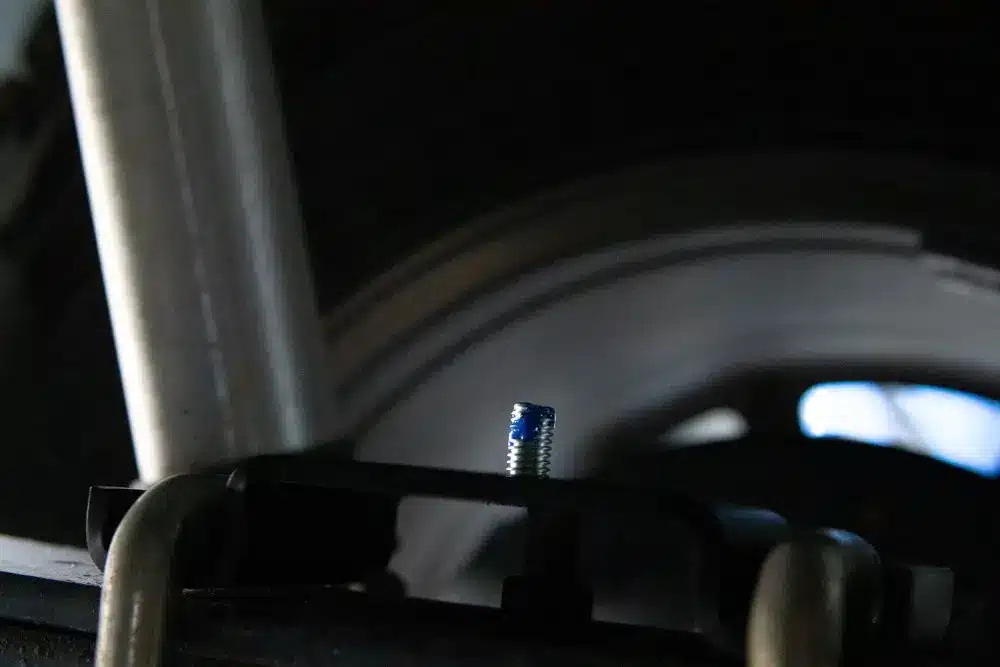
At this point, you should have loosened the U-bolts and removed the stock bump stop. Now it’s time to install the SumoSpring.
The SumoSprings come with some blue Loctite to apply to the bolt that holds the spring to its bracket. If you jacked up your truck for the installation, you’ll want to put the Loctite on first. To do this, simply unscrew the spring from its base, add the provided Loctite to the bolt, then screw the spring back on.
If you are doing the installation without jacking up your truck, you can add the Loctite after installing the SumoSpring.
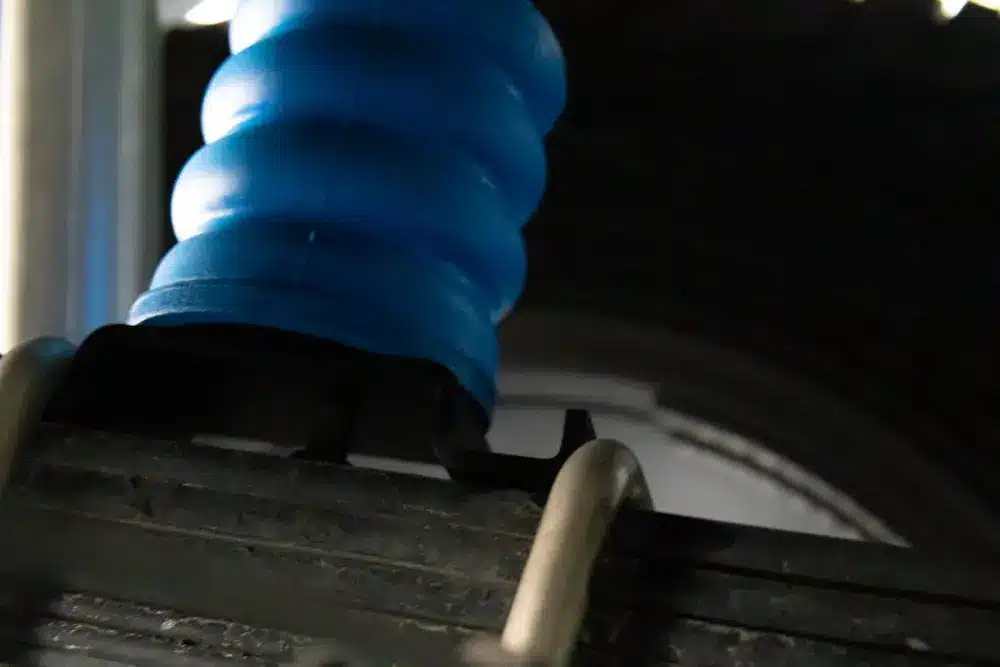
Now you are ready to install the SumoSpring onto the leaf pack of your Tacoma. To do this, simply angle one side of the bracket under one of the loosened U-bolts.
I found that the bracket on the SumoSpring is taller than the bracket on the stock bump stop. Because of this, I needed to completely remove the nuts on the other U-bolt in order to get it over the lip of the bracket.
Once the SumoSpring is in place, you can tighten the U-bolts back down.
PART 3. TORQUE DOWN SUMOSPRING U-BOLTS
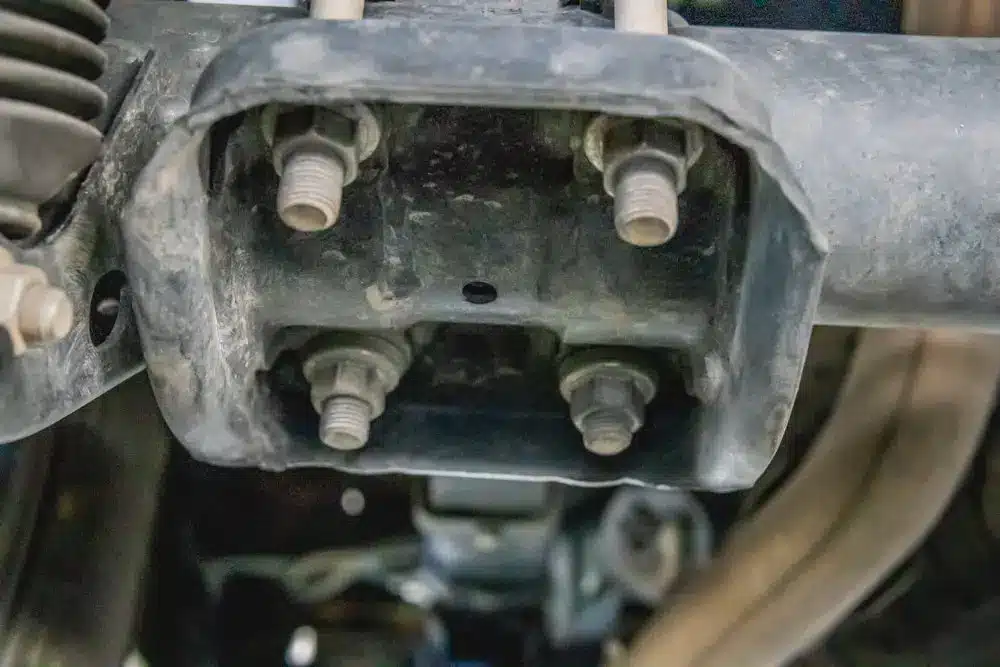
When searching to find the torque spec for the U-bolts, I ran into some controversial answers.
What is the Torque Spec on Tacoma U-Bolts?
I believe a previous version of the Tacoma manual had the U-bolt spec listed at 37lb-ft, which is ridiculously low. Some have speculated that the manual had the numbers backwards and it really meant to say 73lb-ft.
I have since seen an updated diagram that lists the specification at 50lb-ft. In my opinion, this still seems a little low. Some aftermarket leaf packs and add-a-leaf (AAL) instructions have the specification all the way up to 120lb-ft.
Suggested Tacoma U-Bolts Torque Spec?
For my peace of mind, I torqued the bolts down to 80lb-ft. This is the spec I used when I installed my Icon 3-leaf AAL, and I didn’t have any issues.
I implore you to check the specification manual for your specific Tacoma or ask your Toyota tech, but I think generally a range of 70-100lb-ft should be okay.
Now that your SumoSpring is installed on one side, just repeat the same process on the other side and you’re done.
FINAL THOUGHTS ON TACOMA SUMOSPRINGS
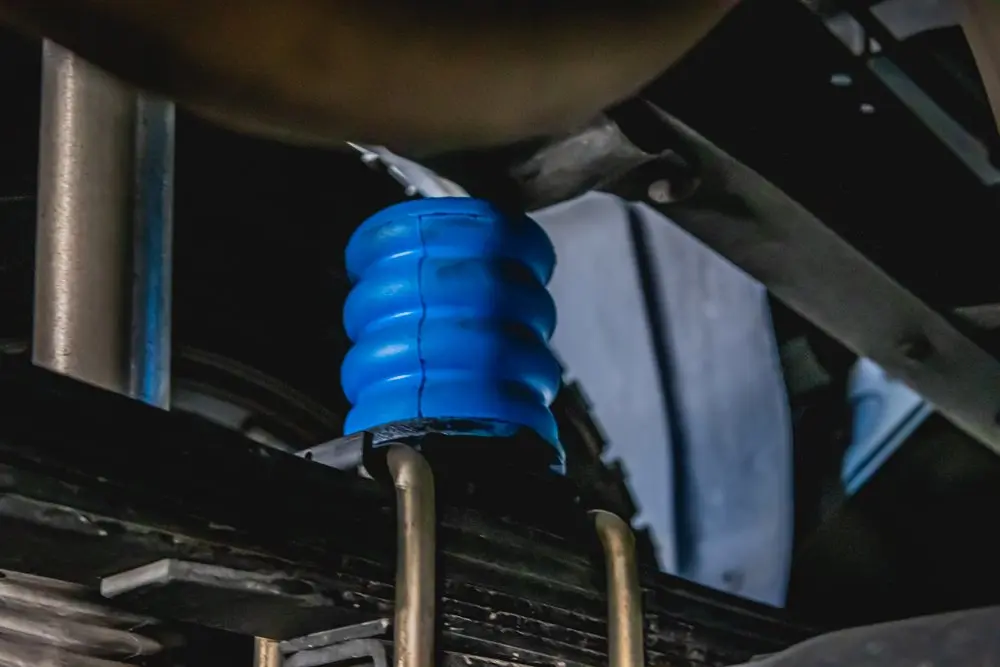
As I stated earlier, I mainly installed the SumoSprings as an upgraded bump stop and not necessarily to reduce sag since I don’t haul or tow often.
So far, I have noticed a pretty significant difference with having the upgraded SumoSprings installed on my Tacoma. Because my truck is lifted and I have the normal SumoSprings, they aren’t resting on my frame as they are intended to.
This means that they aren’t getting engaged unless my truck is flexed about 2” or so on either side. I am perfectly happy with this because it helps me to retain some articulation of my soft suspension while off-roading.
Regardless, the SumoSprings are still hitting the frame quite often both under normal driving conditions and when I’m off-roading. I have noticed that the SumoSprings seem to be “catching” the bed on its way down when going over large bumps.
Overall, I am very happy with this upgrade and they are working perfectly for my situation. They are providing me with a smoother ride while off-roading and are preventing the nasty clunking that occurred when hitting the stock bump stops on the frame.
3RD GEN TACOMA SUMOSPRINGS INSTALL VIDEO
3RD GEN TACOMA SUMOSPRINGS REVIEW VIDEO
Use our application guide to see what we have for your vehicle.


